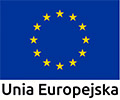On August 4, the Treblinka Museum was visited by the Holocaust Survivor Ike Alterman from Ożarów. During World War II, Mr. Alterman was a prisoner of the German camps in Zwangsarbeitslager für Juden in Blizyn, Auschwitz and Thereisenstadt. His mother and sister were murdered in Treblinka. In August 1945, after the liberation of Thereisenstadt, he moved to Windermere, England. The distinguished guest was accompanied by Caroline Sturdy Colls, who cooperates with the Treblinka Museum.
Caroline Sturdy Colls is a Professor in Conflict Archaeology and Genocide Investigation at Staffordshire University specialising in Holocaust studies, identification of human remains, forensic archaeology and crime scene investigation.
The archaeological research carried out by Professor Caroline Sturdy Colls was of particular importance for the Treblinka Museum. In 2013, during the archaeological research carried out at the Treblinka II Extermination Camp, the international research team she headed excavated over 300 artifacts, including ceramic tiles of the gas chambers. This research was important not only for cognitive reasons, but also had a great impact on the development of the Treblinka Museum exhibition. The research resulted in the opening of a new permanent exhibition entitled “Finding Treblinka”, which is still presented in the main exhibition hall of our museum. At that time, one of the artifacts excavated near the so called “old” gas chamber was a women’s rose-shaped brooch, which became the most recognizable symbol of Treblinka in the world. Roger Moorhouse, the author of the book “The Third Reich in 100 Objects” considered it a symbol of World War II important enough to be described among such objects as Adolf Hitler’s “Mein Kampf” or the gate of the Auschwitz-Birkenau camp.
In 2013, Caroline Sturdy Colls also conducted research at the Execution Site. One of the main aim of the research was to determine whether there were any mass graves, which were not commemorated. It resulted in the discovery of a mass graves containing the remains of the victims. The Caroline Sturdy Colls team also conducted excavations at the Treblinka II Extermination Camp in 2017. In November 2019, the professor was a member of an international team established as part of the investigation conducted by the prosecutor of the Branch Commission for the Prosecution of Crimes against the Polish Nation in Szczecin regarding crimes against prisoners of the Penal Labour Camp committed in 1941–1944.
The “Meritorious for the Treblinka Museum” commemorative medal awarded to Caroline Sturdy Colls honors special merits for the Treblinka Museum. The Nazi German Extermination and Forced Labour Camp (1941-1944). Professor Sturdy Colls disseminated knowledge about Treblinka, both about the Treblinka II Extermination Camp and the Treblinka I Labor Camp at international conferences. She is the author of numerous scientific articles devoted to Treblinka and the laureate of many prestigious awards, including European Archaeological Heritage Prize.
The “Meritorious for the Treblinka Museum” medal is an expression of our gratitude for her commitment and assistance in the implementation of the statutory aims of the Treblinka Museum.





